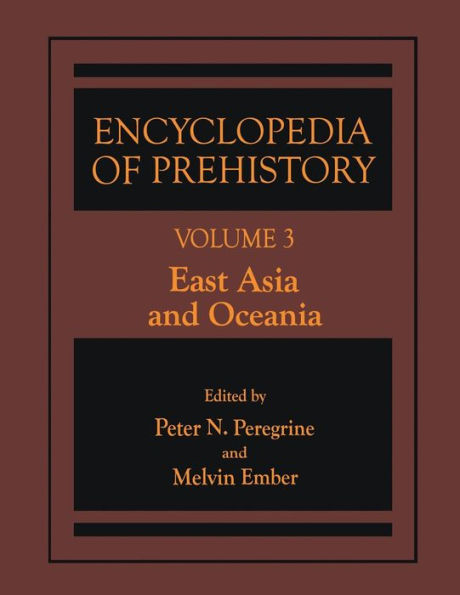Encyclopedia of Prehistory: Volume 3: East Asia and Oceania
The Encyclopedia of Prehistory represents also defined bya somewhatdifferent set of an attempt to provide basic information sociocultural characteristics than are ethon all archaeologically known cultures, nological cultures. Major traditions are covering the entire globe and the entire defined based on common subsistence prehistory ofhumankind. It is designed as practices, sociopolitical organization, and a tool to assist in doing comparative material industries, but language, ideology, research on the peoples of the past. Most and kinship ties play little or no part in of the entries are written by the world's their definition because they are virtually foremost experts on the particular areas unrecoverable from archaeological conand time periods. texts. In contrast, language, ideology, and The Encyclopedia is organized accordkinship ties are central to defining ethnoing to major traditions. A major tradition logical cultures. is defined as a group ofpopulations sharing There are three types ofentries in the similar subsistence practices, technology, Encyclopedia: the major tradition entry, and forms of sociopolitical organization, the regional subtradition entry, and the which are spatially contiguous over a relasite entry. Each contains different types of tively large area and which endure tempoinformation, and each is intended to be rally for a relatively long period. Minimal used in a different way.
1113898909
Encyclopedia of Prehistory: Volume 3: East Asia and Oceania
The Encyclopedia of Prehistory represents also defined bya somewhatdifferent set of an attempt to provide basic information sociocultural characteristics than are ethon all archaeologically known cultures, nological cultures. Major traditions are covering the entire globe and the entire defined based on common subsistence prehistory ofhumankind. It is designed as practices, sociopolitical organization, and a tool to assist in doing comparative material industries, but language, ideology, research on the peoples of the past. Most and kinship ties play little or no part in of the entries are written by the world's their definition because they are virtually foremost experts on the particular areas unrecoverable from archaeological conand time periods. texts. In contrast, language, ideology, and The Encyclopedia is organized accordkinship ties are central to defining ethnoing to major traditions. A major tradition logical cultures. is defined as a group ofpopulations sharing There are three types ofentries in the similar subsistence practices, technology, Encyclopedia: the major tradition entry, and forms of sociopolitical organization, the regional subtradition entry, and the which are spatially contiguous over a relasite entry. Each contains different types of tively large area and which endure tempoinformation, and each is intended to be rally for a relatively long period. Minimal used in a different way.
169.99
In Stock
5
1

Encyclopedia of Prehistory: Volume 3: East Asia and Oceania
386
Encyclopedia of Prehistory: Volume 3: East Asia and Oceania
386Hardcover(Softcover reprint of the original 1st ed. 2001)
$169.99
169.99
In Stock

Product Details
| ISBN-13: | 9780306462573 |
|---|---|
| Publisher: | Springer US |
| Publication date: | 01/31/2001 |
| Series: | Elgar Mini Series |
| Edition description: | Softcover reprint of the original 1st ed. 2001 |
| Pages: | 386 |
| Product dimensions: | 8.27(w) x 10.98(h) x 0.04(d) |
From the B&N Reads Blog
